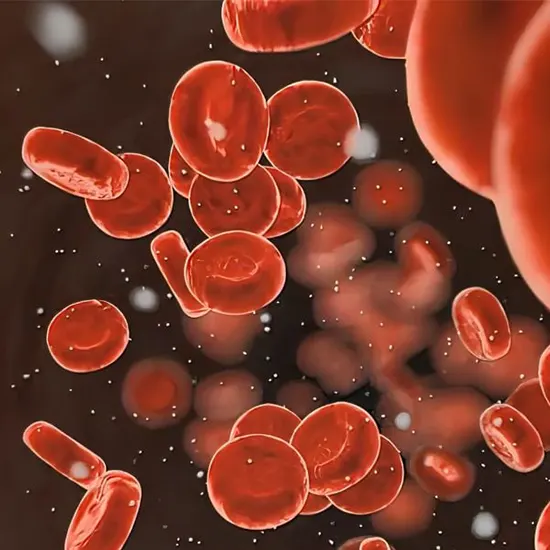
Hyperosmolar hyperglycemic state may be a metabolic complication of diabetes mellitus characterized by extreme hyperglycemia, extraordinary lack of hydration, hyperosmolar plasma, and modified awareness.
Hyperosmolar hyperglycemic state may be a metabolic complication of diabetes mellitus characterized by extreme hyperglycemia, extraordinary lack of hydration, hyperosmolar plasma, and modified awareness.
It most often occurs in sort 2 diabetes, regularly within the setting of physiologic push. Hyperosmolar hyperglycemic state is analyzed by serious hyperglycemia and plasma hyperosmolality and nonappearance of critical ketosis. Treatment is IV saline arrangement and affront. Complications incorporate coma, seizures, and passing.
Hyperosmolar hyperglycemic state (already alluded to as hyperglycemic hyperosmolar nonketotic coma [HHNK] and nonketotic hyperosmolar disorder [NKHS]) may be a complication of sort 2 diabetes mellitus and has an evaluated mortality rate of up to 20%, which is essentially higher than the mortality for diabetic ketoacidosis (as of now < 1> 600 mg/dL [> 33.3 mmol/L]) and osmolality (> 320 mOsm/L) are ordinarily much higher than in diabetic ketoacidosis.
Signs and indications of hyperosmolar hyperglycemic state
Crucial signs related to HHS incorporate the taking after:
- Tachycardia
- Orthostatic diminish in blood weight
- Hypotension
- Tachypnea
- Hyperthermia, on the off chance that disease is display
Physical exam discoveries and signs related to HHS incorporate the taking after
- Changed mental status, disarray
- Dormancy
- Sick appearance
- Dry mucous layers
- Indented eyes
- Diminished skin turgor
- Destitute capillary refill
- Powerless string beat
- Anhidrosis
- Diminished pee yield
- Coma
Side effects and Signs of HHS
The essential side effect of hyperosmolar hyperglycemic state is changed awareness changing from disarray or confusion to coma, as a rule as a result of extraordinary drying out with or without prerenal azotemia, hyperglycemia, and hyperosmolality. In contrast to diabetic ketoacidosis, central or generalized seizures and transitory hemiplegia may happen.
Cause
The most risk calculate may be a history of diabetes mellitus sort 2. Once in a while it may happen in those without a earlier history of diabetes or those with diabetes mellitus sort 1.Triggers incorporate diseases, stroke, injury, certain solutions, and heart attacks.
Other hazard components
- Need of adequate affront (but sufficient to avoid ketosis)
- Destitute kidney function
- Destitute liquid admissions (dehydration)
- More seasoned age (50–70 years)
- Certain therapeutic conditions (cerebral vascular damage, myocardial dead tissue, sepsis)
- Certain medicines (glucocorticoids, beta-blockers, thiazide diuretics, calcium channel blockers, and phenytoin)
Determination of HHS
- Blood glucose level
- Serum osmolarity
Hyperosmolar hyperglycemic state is at first suspected when an extraordinarily raised glucose level is found in a fingerstick example obtained within the course of a workup of changed mental status. In case estimations have not as of now been gotten, pee ought to be tried for ketones and the taking after ought to be measured in a blood test:
- Serum electrolytes
- Blood urea nitrogen (BUN)
- Creatinine
- Glucose
- Ketones
- Plasma osmolality
Serum potassium levels are ordinarily typical, but sodium may be moo or tall depending on volume shortfalls. Hyperglycemia may cause dilutional hyponatremia, so measured serum sodium is rectified by including 1.6 mEq/L (1.6 mmol/L) for each 100 mg/dL (5.6 mmol/L) height of serum glucose over 100 mg/dL (5.6 mmol/L). BUN and serum creatinine levels are particularly expanded. Blood vessel pH is more often than not > 7.3, but every so often gentle metabolic acidosis is created due to lactate amassing.
The liquid shortfall can surpass 10 L and acute circulatory collapse could be a common cause of passing. Far reaching thrombosis may be a visit to dissection and in a few cases dying may Urine Ketone Body happen as a result of spread intravascular coagulation. Other complications incorporate goal pneumonia, intense renal disappointment, and intense respiratory distress syndrome.
Clinical calculator
- Anion Hole symbol
- Treatment of HHS
- IV 0.9% saline
- Correction of any hypokalemia
- IV affront (as long as serum potassium is ≥ 3.3 mEq/L [≥ 3.3 mmol/L])
- Treatment comprises IV saline, rectification of hypokalemia, and IV affront.
Administration
Stages and timelines
The JBDS HHS care pathway comprises 3 primary topics to consider when overseeing a quiet with HHS:
- Clinical appraisal and checking
- Mediations
- Evaluations and anticipation of hurt
To streamline administration, there are 5 stages of treatment from the time of acknowledgment of the condition to determination:
- 0–60 min
- 1–6 hours
- 6–12 hours
- 12–24 hours
- 24–72 hours
Intravenous liquids
Treatment of HHS starts with reestablishing tissue perfusion utilizing intravenous liquids. Individuals with CECT Chest HHS can be dried out by 8 to 12 liters. Endeavors to adjust this as a rule take put over 24 hours with starting rates of ordinary saline frequently within the run of 1 L/h for the primary few hours or until the condition stabilizes
Electrolyte substitution
Potassium substitution is frequently required as the metabolic issues are corrected.It is by and large supplanted at a rate 10 mEq per hour as long as there's satisfactory urinary output.
Affront
Affront is given to decrease blood glucose concentration; be that as it may, because it moreover causes the development of potassium into cells, serum potassium levels must be adequately tall or perilously moo blood potassium levels may result. Once potassium levels have been confirmed to be more prominent than 3.3 mEq/L, Chest x-ray at that point an affront mixture of 0.1 units/kg/hr is started.The objective for determination may be a blood glucose of less than 200 mg/dL
Target plasma glucose is between 250 and 300 mg/dL (13.9 to 16.7 mmol/L). After recuperation from the intense scene, patients are ordinarily exchanged to balanced dosages of subcutaneous affront.
Potassium substitution is similar to that in diabetic ketoacidosis
40 mEq/hour for serum potassium < 3.3 mEq/L (< 3.3 mmol/L); 20 to 30 mEq/hour for serum potassium between 3.3 and 4.9 mEq/L (3.3 and 4.9 mmol/L); and none for serum potassium ≥ 5 mEq/L (≥ 5 mmol/L).









